 |
 |
 |
| |
NON-OBESE NAFLD IS ASSOCIATED WITH HIGHER SCD14
CONCENTRATIONS IN ADULTS WITH HIV
|
| |
| |
CROI 2022 Feb 11-16
Jordan Lake1, Han Feng1, Hongyu Miao1, Paula Debroy1, Anoma Somasunderam1, Netanya S. Utay1
1University of Texas Health Science Center at Houston, Houston, TX, United States
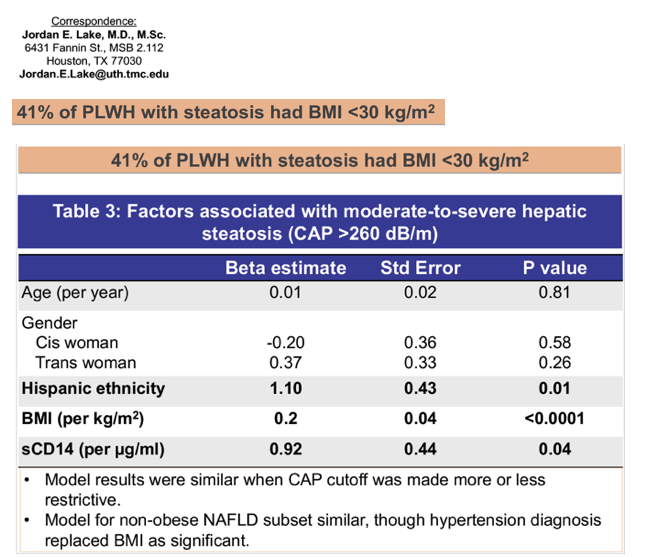
program abstract
Background:
Hepatic steatosis is highly prevalent in people living with HIV (PLWH). Additionally, non-obese (BMI <30 kg/m2), non-alcoholic fatty liver disease (NAFLD) may be more frequent in PLWH than the general population, but etiology and risk factors are incompletely understood. Soluble CD14 (sCD14) is a marker of monocyte/Kupffer cell activation that is associated with (obese) NAFLD disease severity. We sought to understand factors associated with hepatic steatosis and non-obese NAFLD in a multi-ethnic cohort of PLWH.
Methods:
In this cross-sectional, observational, single center study in Houston, TX (2017-2020), adult PLWH were approached at random and offered screening for hepatic steatosis by FibroScan® controlled attenuation parameter (CAP) measurement. Biomarkers associated with NAFLD physiology in the general population were measured centrally by ELISA. Multivariable regression modeling explored factors associated with hepatic steatosis (all participants) and the subset of PLWH with NAFLD (no heavy alcohol or viral hepatitis).
Results:
Participants (n=194) were 95% non-white, 22% cisgender female, 34% transgender female, and had median age 49 years, time with HIV 15 years and time on ART 11 years; 5% had heavy alcohol intake, and 11% chronic HBV or HCV.
Using CAP cutoffs of 248 and 260 dB/m, 58% of the cohort had any and 46% had moderate or greater hepatic steatosis, respectively. 41% of those with steatosis were non-obese.
In multivariable analysis, Hispanic ethnicity and higher BMI and sCD14 concentrations were independently associated with hepatic steatosis (CAP ≥260 dB/m).
In models assessing associations with non-obese steatosis and non-obese NAFLD, BMI was replaced by current smoking and hypertension, respectively.
Changing the CAP cutoff to be more or less inclusive did not substantially change model results, with higher sCD14 levels consistently associated with steatosis prevalence. Additionally, sCD14 concentrations were higher among persons with non-obese NAFLD than obese NAFLD and non-NAFLD PLWH.
Conclusion:
In this cohort of adult PLWH on contemporary ART, hepatic steatosis was common. Non-obese steatosis was prevalent in 20% of the cohort, a rate 5 times higher than the US general population. Higher sCD14 concentrations were associated with steatosis/NAFLD in obese and non-obese PLWH, but sCD14 concentrations were the highest among PLWH with non-obese NAFLD. The physiology of non-obese NAFLD in PLWH demands further exploration.
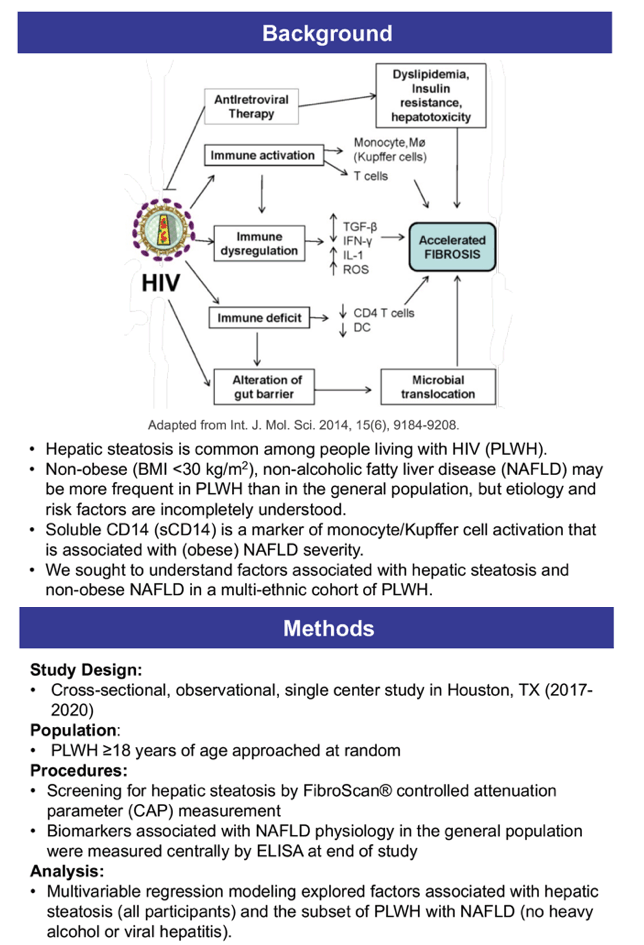
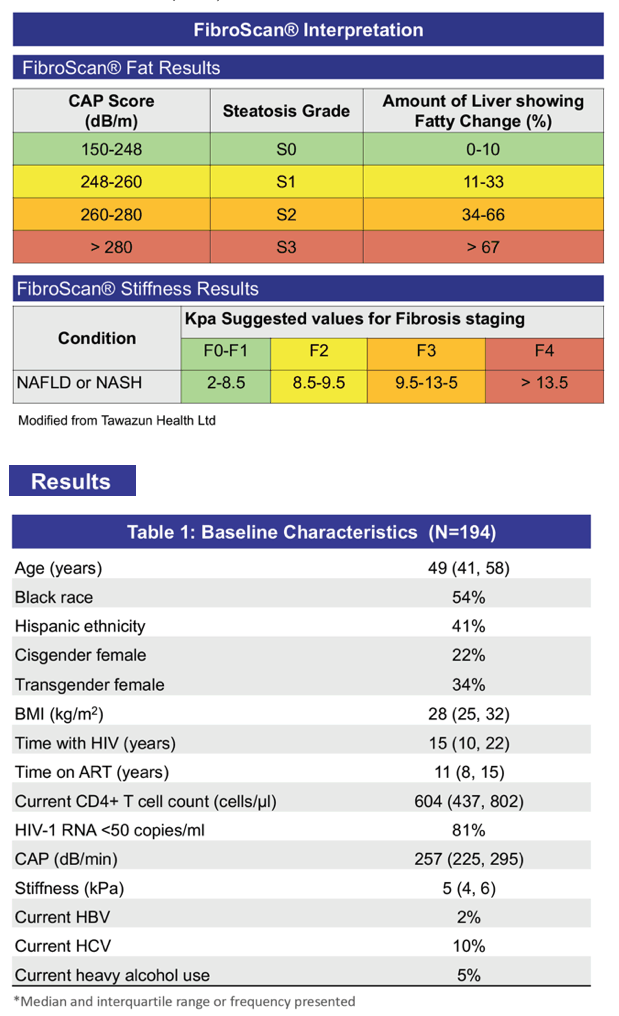
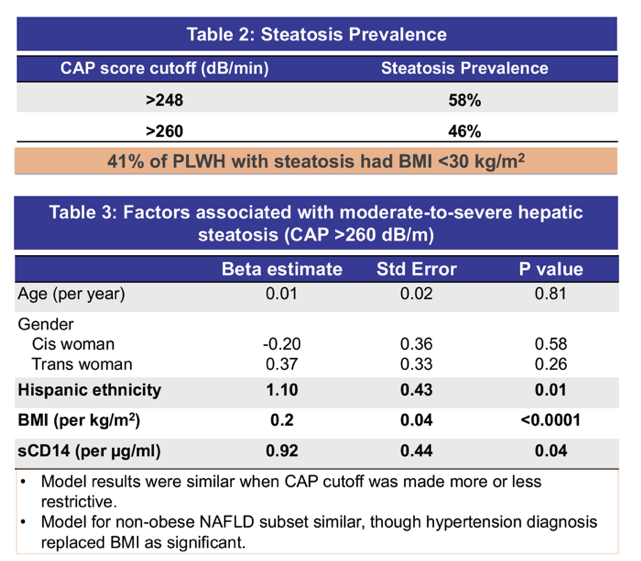

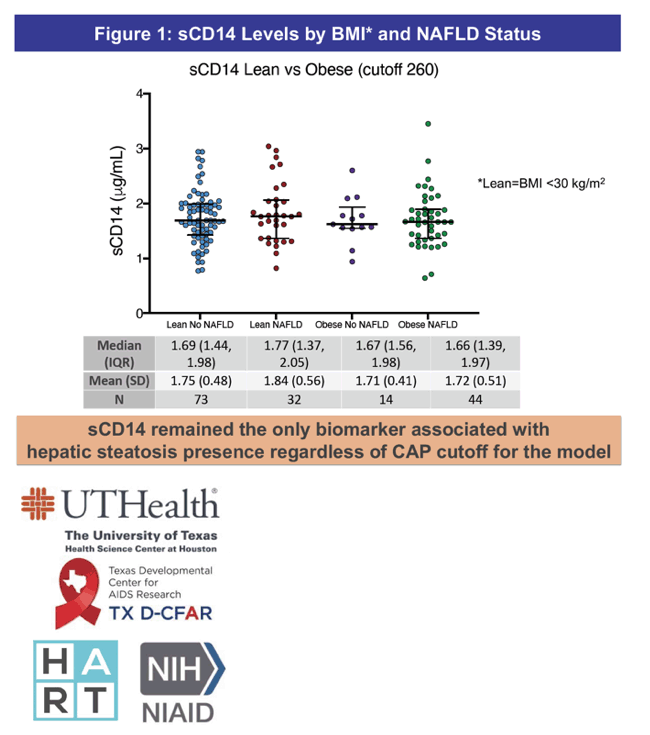
|
| |
|
 |
 |
|
|